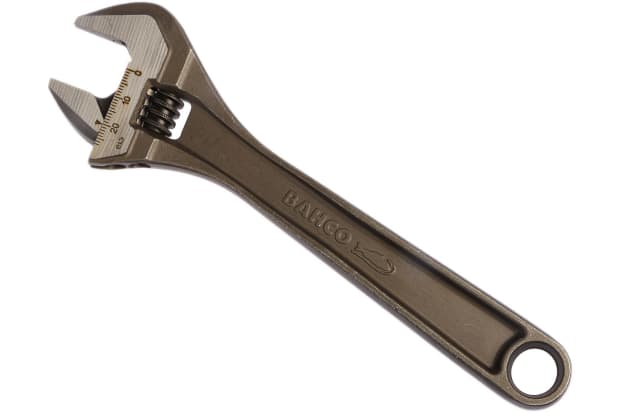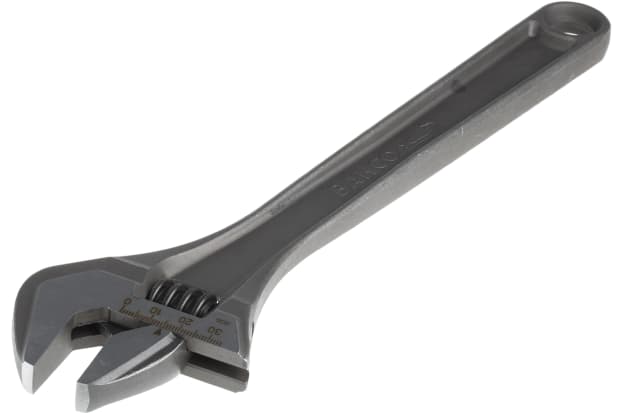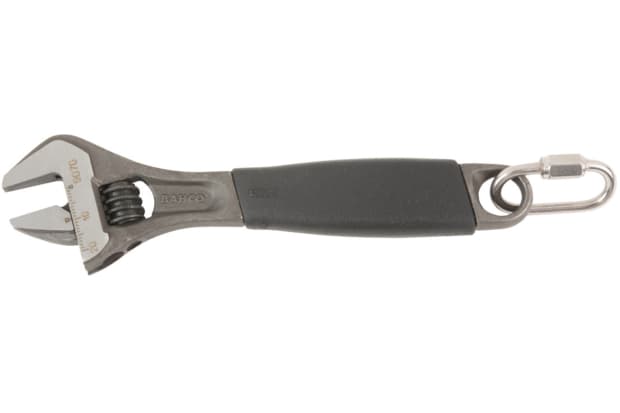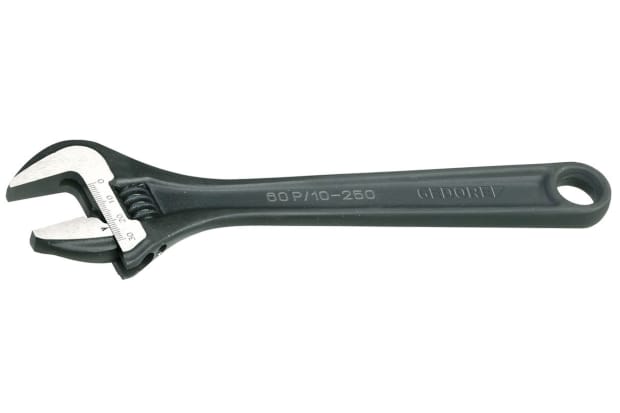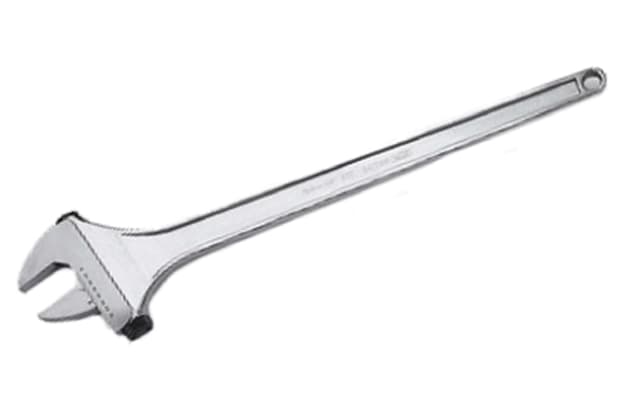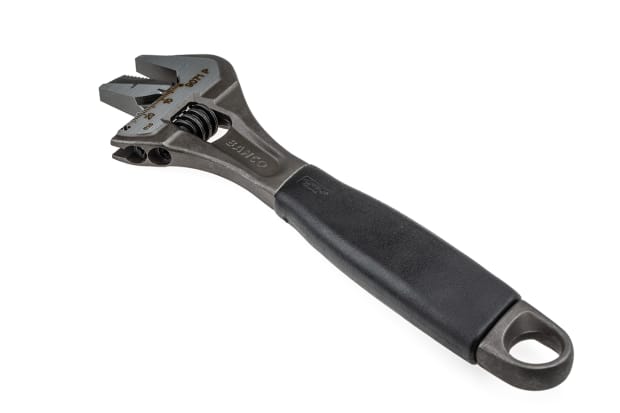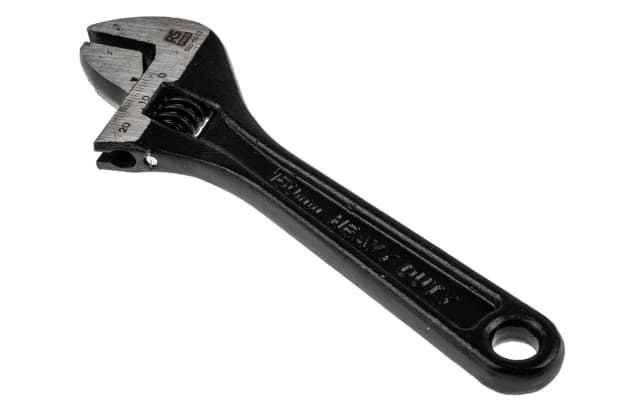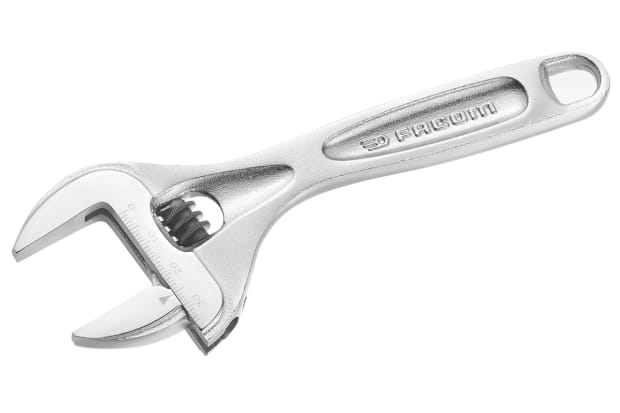- Published 11 Jan 2023
- Last Modified 29 Aug 2023
- 10 min
The Complete Guide to Adjustable Spanners
This guide looks at what adjustable spanners are, how they’re used and what's currently available on the market for a range of job and project requirements.

What is an adjustable spanner?

An adjustable spanner - also known as an adjustable wrench, most commonly in the US - is a familiar everyday tool used by millions of professional and hobbyist users worldwide.
Its function is much the same as any other spanner or wrench, namely to grip onto a fastener head (usually a nut or bolt) and allow the user to tighten or loosen it as required. The obvious defining difference with adjustable spanner tools is that they’re explicitly designed to offer a flexible, moveable jaw. This enables the user to set specific opening widths in order to tackle fasteners of multiple different sizes.
Most non-adjustable spanners and wrenches can only be used on one particular size of bolt or nut. This means that if you’re dealing with various sizes of fasteners on a single job, you’ll have to bring multiple non-adjustable spanners along with you.
Alternatively, the adjustable wrench helps you avoid the inconvenience and additional carry weight of carting a complete spanner set around with you by providing the option to fine-tune the tool’s jaw opening width to fit around various sizes of fastener as you go.

Adjustable spanners have been in popular use since the 1890s when they were first conceived and patented by Swedish industrialist and inventor Johan Petter Johansson (also credited with the invention of the plumber wrench at around the same time). Once in mass production, Johansson’s tools went on to be sold under the Bahco brand - and, having manufactured more than 100 million wrenches since that time, the company remains a major global force in the sector to this day.
There are now many different makes, types and uses of adjustable spanners or wrenches sold on both the UK and worldwide markets today. In this guide, we’ll take a closer look at exactly what adjustable spanners are, how they’re most commonly used in a range of different applications and environments, and what buying options are currently available from suppliers and manufacturers for meeting a range of demanding project requirements.
What is an adjustable spanner used for?

The potential uses of an adjustable spanner are almost too numerous to mention, but in essence they all perform the same fundamental task. Their key role is to enable the tool user to achieve a firm tightening or loosening grip on multiple different sizes of fastener, as opposed to having to swap for a different non-adjustable spanner size every time they come up against a new gauge/diameter of nut, bolt or pipe section.
On the vast majority of adjustable wrenches, it’s the smaller lower jaw that can be moved backward or forward, widening or narrowing the gap between it and the fixed upper jaw according to which size of fastener you need it to fit snugly around. Most adjustable spanners work with both metric and imperial fastener gauges, and are almost always single-ended tools.
There is arguably something of a trade-off for this dramatically increased convenience and functionality, however. Due to their slightly heftier heads that must also accommodate the jaw-altering mechanism, adjustable spanners can tend to be slightly more unwieldy than many smaller or more dextrous fastening tools.

This can sometimes make adjustable versions more difficult to use than standard spanners when working in very confined or tight spaces. Lower quality adjustable wrenches can also suffer from unwanted wandering of the lower jaw, meaning the width the user has set the tool to doesn’t stay locked in under more heavy duty use, and must therefore be readjusted or reset periodically.
Adjustable spanners are used in all manner of professional and hobbyist assembly, plumbing and DIY applications the world over. In the following sections, we’ll examine what range of sizes of adjustable spanners are commonly available to buy from suppliers and manufacturers around the world.
Because an ‘adjustable spanner’ is something of an umbrella term covering numerous subtypes of job-specific wrench tools, we’ll also go on to look at some of the many different options sold under the generic category of adjustable spanners worldwide.
How to use an adjustable spanner

The process of using an adjustable spanner is a very easy one if you’re familiar with standard spanners. In terms of applying them to the fastener, adjustable variants function essentially the exact same way as non-adjustable versions, but with the added flexibility of allowing you to manually alter the jaw width between tackling fasteners of varying sizes.
Adjusting the spanner is simple, and usually involves turning a screw (often known as a worm screw) mounted on the side/base of the spanner head. Sometimes the worm screw is located at the top of the handle, where it meets the lower or heel jaw.
First Step
Identify the correct size of the nut or bolt you want to loosen or tighten.
Second Step
Turn the screw mechanism on the tool to open or close the spanner (i.e. to alter the width gap between its jaws) to the required setting.
Depending on which way you turn the screw mechanism, the jaws of the spanner will begin to open or close accordingly (it’s almost always the smaller lower jaw that actually moves, in relation to the static upper jaw which remains fixed in place.)
Third Step
Once you’ve opened or closed the lower jaw to the required width for the fastener you’re turning (usually indicated by markings on the head of the tool), you can place it over the nut or bolt in question and double check that the spanner can get a secure grip on it - if not, you may need to do some further adjustments until it can.
Final Step
Once you’ve got the tool to grip the fastener as tightly as required, proceed much as you would with any other, non-adjustable spanner: turn the fastener right to tighten it, or left to loosen it
Because high quality tools of this type are capable of delivering a very tight grip on a nut or bolt when used properly, you may find it’s often necessary to manually loosen the jaws of an adjustable wrench again after turning the fastener to the desired degree, in order to easily remove it from the head of the fastener around which it’s seated.
General adjustable spanner safety tips
As with all types of spanner - adjustable or non-adjustable - there are several commonly observed guidelines and codes of best practice you should take note of, in order to make sure you’re using these tools appropriately and safely. These often include such tips as:
Always use a sensibly fitting tool
Try to choose sizes that reduce the amount of play between the jaws and the fastener as much as possible. This will minimise the risk of slipping on the bolt or nut, and potentially damaging either it, the spanner, or yourself
There should never be more than a millimetre of play as an absolute maximum - if there is, you’re not using the right size wrench
Refer to a proper thread gauge if you’re unsure of which size tool you ought to be using for a particular fastener
Don’t try to apply more torque than you can handle
Avoid using hammers, mallets or other striking tools to apply extra torque to any type of spanner that isn’t explicitly designed and built for that purpose (most adjustable wrenches are not)
If you’re placing so much weight on the tool means it is not unlikely that the tool could slip violently or the fastener could suddenly give way.
As it is possible that you’d likely fall or otherwise injure yourself in either of the above scenarios, then you’re not performing the job safely and you may need to consider a different approach.
Be mindful of any existing damage or wear
All tools should always be checked before use for obvious signs of suboptimal condition before tackling any demanding jobs.
Adjustable wrenches ought to be calibrated for width settings on a regular basis, and certainly before starting a new job (even if the fasteners you’re dealing with are the same size as the last time you used the spanner)
Keep adjustable spanners and wrenches clean
In between uses, store them away securely in an appropriate container or tool box to have the best chance of keeping the tools dry and free from excessive grease, grime or rust
If necessary, give them a quick clean before commencing use - this can usually be done with a cleaning rag and some light oil
Be sure to mop up any excess cleaning fluids or oils, as these can also cause hands or spanner jaws to slip while the tool is subsequently in use
Do not use extension bars or tubes indiscriminately
It’s easy to exceed the rated torque specifications of the tool when using extensions carelessly, which can quickly lead to serious damage or injury
Always be aware of your environment
Think about the area you’re working in, and any potential hazards it may pose to you or to other people in the vicinity while completing the task. This can include:
- Available room for manoeuvre
- Prevailing environmental conditions
- Other users of the space
- Potential causes of slips/trips/falls
- Sources of airborne dust, dirt or contamination
- Any other risk factors to your own health or that of others
Consider external factors
Be aware that factors such as vibration or thermal changes can cause sudden loosening or tightening of fasteners, which can be rapidly compounded by any additional forces you’re applying to them
Adjustable spanner lengths and jaw capacities
There are a great many different sizes of adjustable spanner available on today’s market. Wrenches are usually sized first and foremost by the diameter of fastener they can accommodate, with a secondary measurement given referring to the length of the tool’s handle (longer handles generally allow for higher torque).
Popular purchase options typically range from small adjustable wrenches - dextrous tools intended for environment-specific or especially light-duty tasks - through to much more robust and physically larger adjustable wrenches, offering considerably more torque force at the cost of progressively reduced manoeuvrability for very heavy-duty or industrial use.
The types of size guides you need to bear in mind will be slightly different when choosing and buying either an adjustable or a non-adjustable wrench. Standard spanners will carry a single size rating, whereas adjustable versions will define a specific range of fastener sizes that the tool in question was designed to accommodate.
These days, all primary wrench sizing information - whether it’s given in metric (millimetres) or imperial (inches or fractions of an inch) format - will generally refer to the full outside diameter of the fastener head it’s designed to accommodate. In other words, the size given on a spanner’s packaging will refer to the largest size of fastener head that will fit between the tool’s jaws.
It’s worth noting out of interest that this wasn’t always the case; much older tool manufacturers used to work to a system whereby it was the diameter of the threaded part of the bolt or nut that had to be matched to the correct tool size. Thankfully, this far less intuitive standard is now considered largely obsolete!
Related links
- RS PRO Adjustable Spanner 20mm Jaw Capacity, Metal Handle
- The Complete Guide to Cordless Screwdrivers
- A Complete Guide to Ammeters
- A Complete Guide to Anemometers
- Solid State Relays: A Comprehensive Guide
- What are Ohmmeters Used for?
- Screw Extractors - A Complete Guide
- Everything You Need To Know About O-Rings And Seals

